Rose Cabat was an American studio ceramicist who was a part of the mid-century modern movement. She was best known for her innovative glazes on small porcelain pots called ‘feelies’ which were often in the shape of onions and figs, and bowls. Rose Cabat was born in New York City in 1927 and died in Los Angeles in 2002. A pottery artist by trade, she was the oldest known actively practicing potter in the United States.
Rose Cabat (June 27, 1914 – January 25, 2015) was an American studio ceramicist who was a member of the mid-century modern movement.
She was best known for her innovative glazes on small porcelain pots known as ‘feelies,’ which were (innovative glazes upon small porcelain pots called ‘feelies’ often) in the shape of onions and figs, and bowls.
Rose Cabat was born in New York City on June 27, 1914, and died in New York City on January 25, 2015. Until recently, she was the world’s oldest known actively practicing pottery artist in the United States of America.
Originally named Rose Katz, Cabat was born in the Bronx in 1914 and married Ernest “Erni” Cabat in 1936.
Where did Rose Cabat Live And Work?
Where did Rose Cabat work most of the time? She worked and lived in her Tucson studio, producing an average of five pots every day, until her death in 2015 at the age of 100.
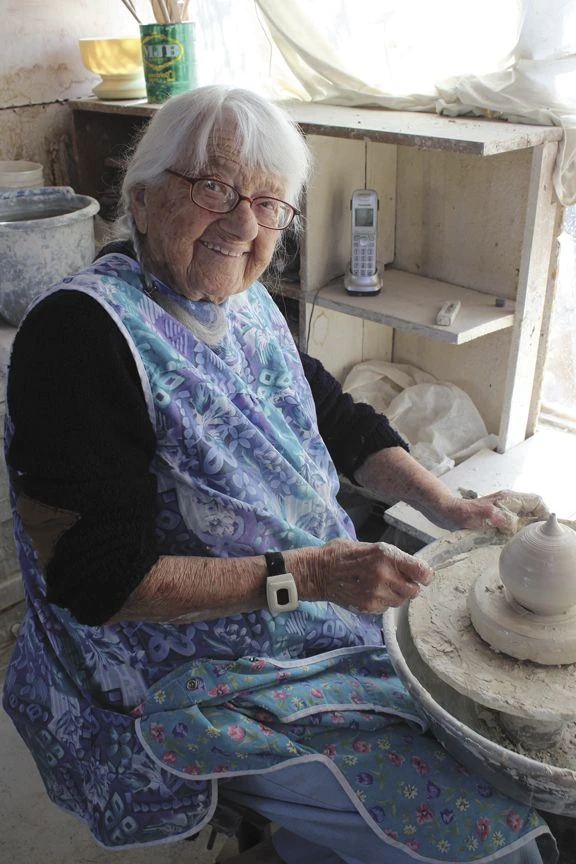
Where Did Rose Cabat Go To School To Study Pottery?
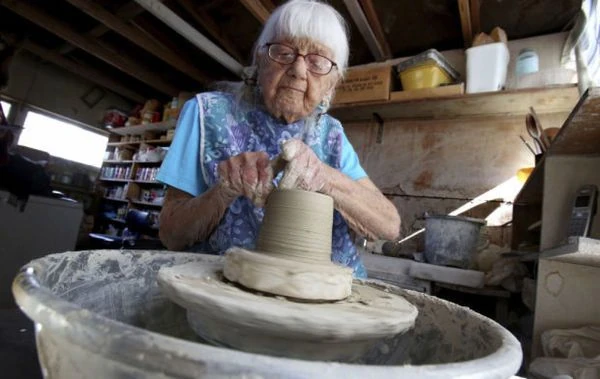
In 1957, she enrolled in a five-week glazing course at the University of Hawaii’s art department, which she completed in 1958. She gained an understanding of contemporary studio ceramics during this semester, which inspired her to specialize solely in porcelain.
Where Was Rose Cabat Born?
Bronx, New York, NY
Rose Cabat’s Career
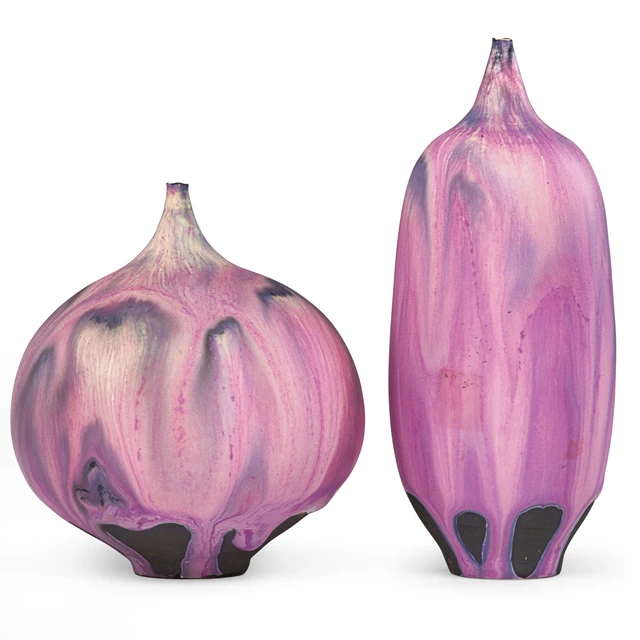
After her husband brought home some clay from his job as an assistant to Vally Wiselthier, an art deco ceramicist who was creating pieces for General Ceramics in Keasbey, New Jersey, she decided to pursue a career in ceramics.
After seeing Rose’s preliminary pieces, Erni offered her a membership at Greenwich House, where she learned how to operate a potter’s wheel. Rose accepted the offer.
Shortly after the birth of their first son, George, the couple discovered that he had persistent asthma. Around 1942, the Cabats decided to relocate to Arizona in an attempt to ameliorate his illness. The Davis-Monthan Army Air Field in Arizona, where Rose worked as a riveter during World War II, was home to war-damaged aircraft.
From the additional clay that Erni was able to collect from brickyards, Rose was able to create rudimentary ceramic utensils for herself. It took her a while to find out how to transform a washing machine into a potter’s wheel, so she fashioned some coil figures in the meantime.
Eventually, Erni ordered a Randall kickwheel, which Rose continued to use until the end of the story. During World War II, she worked as a munitions production worker, and in her spare time; she created ceramic pieces.
Rose Cabat’s Style

What Are Feelies?
Feelies are defined as ceramic vases with onion, cucumber, and saucer shapes that have an upward closed neck and are made of ceramic. Collector Bruce Block has described them as sensual and tactile, with a very specific and unforgettable feel, spiritual, appearing to carry a form of energy, and ethereal in appearance.
She created a silky satiny glaze, but it wasn’t until around 1960 that she came up with the first of the proper forms, which were slender and sleek to match the glaze she was looking for. She coined the phrase when she shouted, “Now this one’s a feelie.”
Feelies Common Shapes
- Balloon-shaped
- Pear-Shaped
- Straight-Sided
Upon developing the new glazes, she realized that she required new forms to apply the glazes to that were distinct from what she had previously created, such as coiled heads and wind bells in the “craft fair” style.
She was reported to have said, “The old things did not appear to be in good condition… I wanted shapes that were more straightforward to go with the glazes.”
They are typically globular in shape, with a microscopic neck glazed to a satin finish that tightens down to a tiny opening. The tactile senses are the most vital to remember.
Feelies Common Glazes
- Onion Skin
- Malachite
- Apple green
- Fruit skin
- Lavender
- Mauve and cream
According to David Rago, a notable expert on mid-century modern furniture and ceramics, Rose Cabat’s “feelies” are the result of a particularly polished and personal vision that is ultimately cheap.
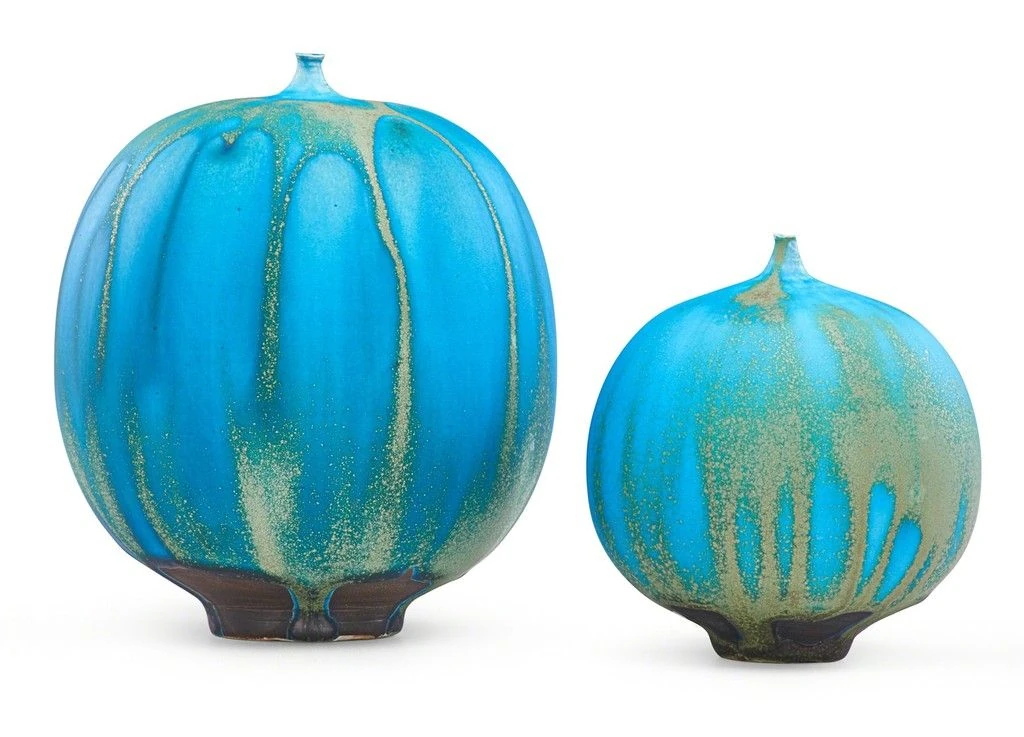
These pieces are affordable and immediately enjoyable for the majority of people, but they are also beautiful and profound. “She distinguished herself by bringing beauty and craftsmanship into the domain of the discerning collector with average means,” says the author.
During the 1960s, when Rose Cabat began working on “feelies”, the American studio ceramics movement was still in its early stages. Her work in the development of glazes and delicate thin-walled porcelain has advanced American ceramics in a quiet but significant way, in contrast to the Natzlers and Peter Voulkos, whose challenging and daring revolutionary pieces have advanced the art form more visibly through the use of bold strokes. Instead, her work is “pleasant on the eye” because it is peaceful and contemplative.
In the United States, she is regarded as an heir to the Arts and Crafts Movement, and she is credited with “bringing American ceramics from adolescence to adulthood.” “Whereas some contemporary studio pottery is academic or even angst-ridden, Rose Cabat’s work. Communicates pure joy in its design and adornment,” writes the New York Times.
Rose Cabat’s Legacy
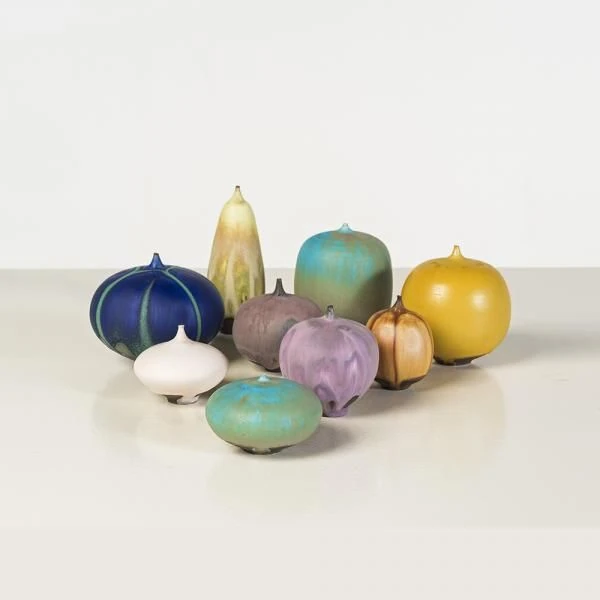
Erni worked as a graphic artist and in advertising in Tucson after the war. Rose continued to manufacture craft ceramics, such as wind chimes, animal shapes, and other commodity items to help support the family after the war. Erni is the author of several children’s books.
They were acquainted with local artists and were instrumental in the establishment of the Art Center, which was the predecessor of the Tucson Museum of Art. Mike and June Cabat was the Cabats’ second and third children.
As a result of taking a glaze calculation class at the University of Hawaii in 1956, the Cabats were able to begin developing glaze formulas that were later used to the “feelie” forms that would become some of Rose Cabat’s most recognizable pieces.
Rose came up with the basic shape of the vessel that would later become the base of the “feelies” around 1960 or 1960-61. It was she who designed the pot, which had a tiny closed neck and was incapable of holding even a single thin stem or stalk. “A vase can store weeds or flowers, but can’t it just be a beautiful area of beauty?” she wondered aloud.
By 1966, Rose Cabat was beginning to be recognized as a craft artist, thanks to an exhibition at the Los Angeles County Museum called Craftsmen USA, where she displayed a casserole she had created. In 1973, her feelies were featured in the exhibition Everyday Life in Early America, where they were displayed alongside pioneering American crafters of the day.

The Tucson Art Museum loaned one of Rose Cabat’s blue-green Feelies to the Vice President’s Mansion at the time, Walter Mondale’s residence in Tucson, to be displayed in the living room alongside other pieces of art, according to the museum.
Rose and Erni continued to make ceramics, including feelies and bowls with their unique glazes, which they sold at craft fairs. Whilst Rose and Erni worked together on the “feelies” and other ceramic forms, Erni ran his advertising agency in Tucson until he was 62 years old, at which point he determined that the family could be supported solely by sales of the “feelies” and other ceramic forms, along with his creative work.
Erni was in charge of the business and the weighing of the glaze components, while Rose was in charge of the craft and the art. On their wedding anniversary, Erni would give Rose a gift of a painting, either of the two of them or of Rose, which she would cherish forever.
The anniversary painting, which Rose had commissioned in 1994, had made him uneasy, and in the following months, he provided precise instructions on how to run the firm and how he went about doing things. Erni died peacefully in his sleep on November 9, 1994, at the age of 80.
Rose continued to make feelies and bowls after 1994, despite her deteriorating mobility, with her daughter June in charge of the business end of things.
At the age of 100, Rose Katz Cabat passed away on January 25, 2015; she was survived by her three children as well as extended family.
Museums And Galleries
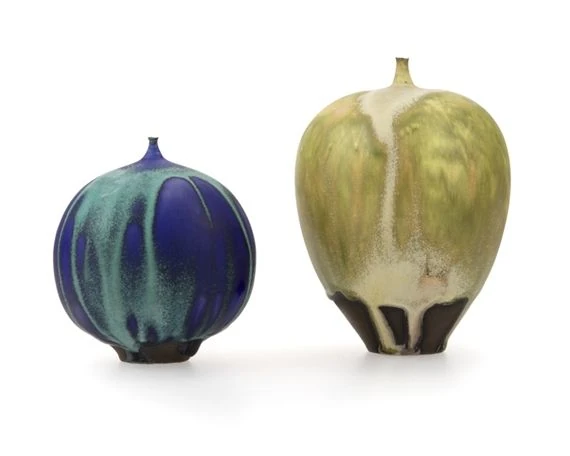
- Arizona State University Art Museum, Tempe, Arizona
- Kansas City Art Institute, Kansas City, Kansas
- Metropolitan Museum of Art, New York, New York
- Museum of Arts and Design, New York, New York
- Philadelphia Museum of Art, Philadelphia, Pennsylvania
- Phoenix Art Museum, Phoenix, Arizona
- Phoenix Airport Museum, Phoenix, Arizona
- Smithsonian National Museum of American History (“Everyday Life in America”)
- Smithsonian American Art Museum, Renwick Gallery, Washington, D.C.
- Tucson Museum of Art, Tucson, Arizona
Images pinterest = Rose Cabat





